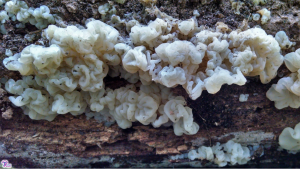#060: Urnula craterium, The Devil’s Urn
The creepiest thing about this black cup fungus is its name. Unfortunately, there’s no good story to go along with the name. If you’re a little disappointed about this, here is a story that I just made up: Some say that each mushroom holds a dead soul that has come back to haunt the world of the living. Sometimes you can even see the soul rise out of the Devil’s Urn and disappear into the air. Although this story is fictitious and tailored to fit the mood of the season, it does have some truth in it. Ascomycetes, which include cup fungi like the Devil’s Urn, often forcibly discharge their spores in a small puff when the air around them is disturbed (by, for example, picking it up or blowing on it). This helps the fungus get its spores into moving air, which can spread the spores across great distances. ...







![#011: Characteristics of Kingdom Fungi [Archived]](https://www.fungusfactfriday.com/wp-content/themes/hueman/assets/front/img/thumb-small-empty.png)

